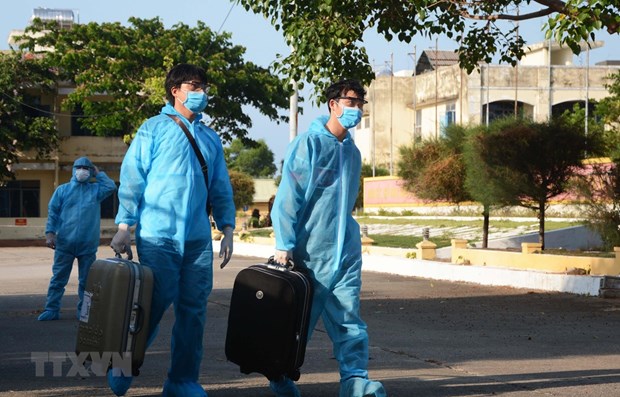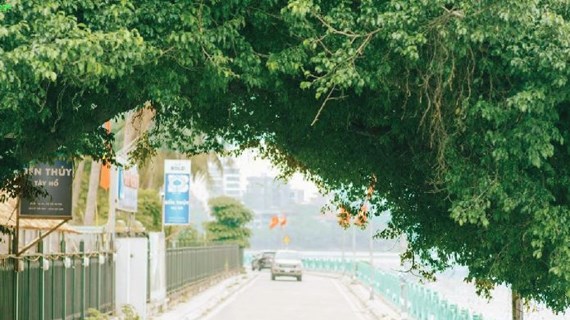Canada newswire: Vietnam – standard in COVID-19 fight
 Guest workers repatriated from the Republic of Korea are kept in quarantine at a military unit in Da Nang city (Photo: VNA)
Guest workers repatriated from the Republic of Korea are kept in quarantine at a military unit in Da Nang city (Photo: VNA)Hanoi (VNA) - Canada’s Globe and Mail newswire on May 27
ran an article saying that Vietnam’s COVID-19 fighting record will stand out as a remarkable,
perhaps unique, achievement, calling the country as a standard in the fight.
The article said Vietnam
has been loosening quarantine measures since late April. Patient 91, a 43-year-old British pilot, is on
life support in a hospital in Ho Chi Minh City, and saving him has become a
national priority. His condition deteriorated to the point that he was
left with only 10-percent lung capacity.
It stressed that Vietnam’s
success was no accident. Its 1,450km border with China and frequent
visitors from Wuhan, the site of the original outbreak in December and January,
meant that Vietnam could have been overrun with cases. But it acted fast
and did not wait for official warnings from the World Health Organisation (WHO)
before it closed its borders, locked down its economy and launched mass
testing, tracing and quarantine measures.
Guy Thwaites, a
professor of infectious diseases and Director of the Oxford University Clinical
Research Unit in Vietnam, said the country swung into action early because it
was well aware of the dangers of unchecked infectious diseases. In the past 20
years, it has suffered from outbreaks of SARS, avian influenza, measles, dengue
fever and hand-foot-and-mouth disease, which attacks young children.
“The Vietnamese are
very respectful of the threat of infectious diseases and know they have to be
treated early,” he said. “They were well prepared”.
A new academic report
on Vietnam’s response to the pandemic, written by Prof. Thwaites and about 20
doctors and scientists, concluded that the early lockdown plus the extensive
testing, contact tracing and mandatory quarantines for people who had come into
contact with anyone who had tested positive were behind Vietnam’s success in
preventing COVID-19 deaths. It said the tracing and quarantine measures were “especially
effective given that nearly half of those infected did not develop symptoms.”
By the beginning of
May, more than 200,000 people had been put into quarantine in government
buildings, military camps, hotels or at home.
Thwaites said the tracing effort did not rely on
sophisticated technology, but old-fashioned, shoe-leather epidemiology. Most of
the country’s relatively few cases were travellers, including Vietnamese
nationals, flying into the country.
He said he believes the
low infection figures and lack of fatalities to be accurate, as he has access
to official data and visits to local hospitals./.













